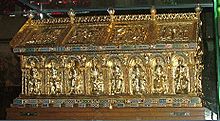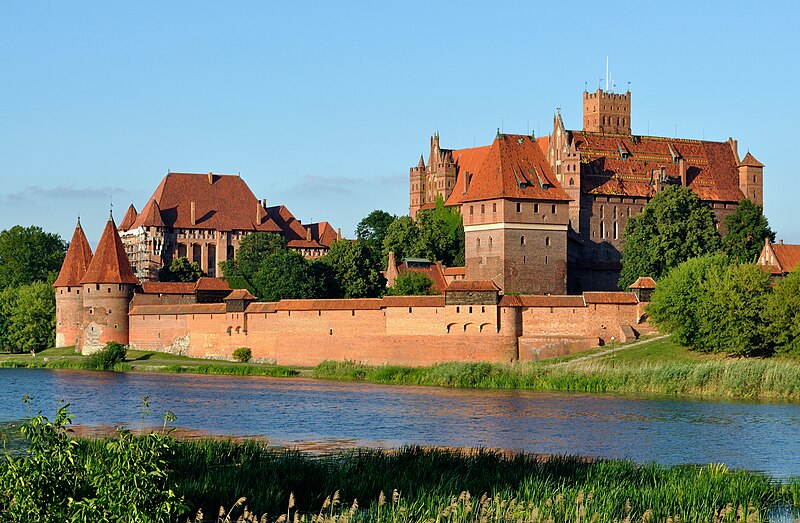Charlemagne or Charles the Great is one of the most popular figures in history. Charlemagne is well remembered as the absolute sovereign ruler of the state, as well as head of the church.
Here’s a long list of interesting things about this great leader in history.
1.) Charlemagne was born on April 2, 742 CE and his name in Latin is Carolus Magnus, Charles the Great in English and Carlo Magno in Spanish.
2.) His father is the Frankish leader – Pepin the Short, mayor of the palace under the Merovingian dynasty of Frankish kings and became king of the Franks in 751 CE.
3.) Pope Stephen II officially crowned Pepin in 754 and anointed both Charlemagne and his younger brother Carloman.
4.) Charles the Great was king of the Franks from 768 up to the time of his death in 814 CE.
5.) He was also emperor of the Romans for 14 years from 800 to 814 CE.
6.) The empire that Charlemagne built included almost all of western and central Europe.
7.) He presided over a cultural and legal revival that came to be known as the Carolingian Renaissance.
8.) Modern-day France and Germany emerged from Charlemagne’s empire, the former as West Francia and the latter as East Francia.
9.) When Pepin died, Charlemagne shared rule of the kingdom with his brother, Carloman and became sole king of the Franks after the death of the latter in 771 CE.
10.) It took 32 years before Charlemagne completely conquered the Saxons from 772 to 804 CE.
11.) He also conquered the Bavarians, Slavs and Avars and obliged them to pay him tribute.
12.) Charlemagne also defeated and ruled the Lombards of Italy in 773 and northern part of Spain in 778 CE.
13.) On December 25, 800, Pope Leo III crowned Charlemagne and anointed him emperor of the Romans after crushing a rebellion in Rome.
14.) Charlemagne introduced many reforms in his empire such as judicial and legal reforms.
15.) He ordered bishops and abbots to set up schools for the training of monks and other clerics.
16.) He made Latin the standard written and spoken language in his huge empire of several languages and dialects.
17.) Charlemagne played a key role in preserving much of the literary heritage of ancient Rome.
18.) After Charlemagne’s death in 814, his sole heir, Louis I, the Pious, ruled until his death in 840.
19.) The Treaty of Verdun of 843 divided Charlemagne’s empire among his three grandsons – Charles, Lothair and Louis.
20.) Louis II, the German, received East Francia.
21.) Charles II, the Bald, received West Francia
22.) Lothair I acquired the title of emperor and an area running from the North Sea through Lotharingia (Lorraine) and Burgundy to northern Italy
23.) The warrior-king image of Charlemagne was the inspiration for all subsequent empire builders in Europe during the Middle Ages.
24.) The word for “king” in several modern Slavic languages such as Krol in Polish and Kral in Czech are based upon the German name of Charlemagne, Karl.
25.) Charles the Great died at the age of 71 in January 28, 814 CE.
26.) Charles the Great was married 4 times. His first marriage was annulled.
27.) He had 11 legitimate children; two were twins and 9 illegitimate children.
28.) Charles the Great had no children with his first wife and fourth wife.
29.) He had two children with his first relationship which is described as concubinage.
30.) Charles the Great had 5 other known concubines. The first 3 bore him a child each; the 4th gave him 2 children and the 5th bore him 4 children.
31.) Physically, Charles the Great was heavily built, sturdy, and of considerable stature.
32.) He had a round head, large and lively eyes, and a slightly larger nose than usual with white but still attractive hair.
33.) He has a bright and cheerful expression, a short and fat neck, and he enjoyed good health.
34.) Charles the Great stood 1.84 meters making him a very tall person during his time.
35.) He wore blue cloak and always carried a sword with him which is typically of a golden or silver hilt.
36.) Charles the Great wore fancy jeweled swords to banquets or ambassadorial receptions.
37.) He despised elaborated and expensive cloths and usually dressed like the common people.
38.) Charles the Great’s favorite food is roasted meat.
39.) He died of Pleurisy, also known as pleuritis, an inflammation of the pleura, the lining of the pleural cavity surrounding the lungs which is often cause by infections.
40.) Charlemagne was buried the same day he died.
See also

























